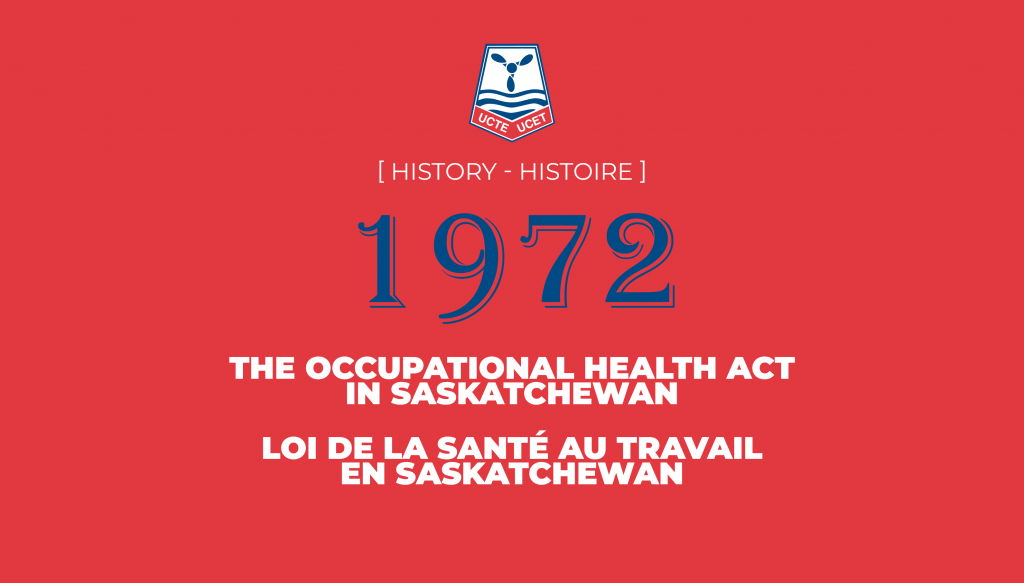The Occupational Health Act in Saskatchewan – 1972
Today, Canada is recognized as a country mostly advanced in the area of occupational health and safety. It has gotten more difficult in recent years, but a lot of work has been accomplished by activists fighting for the working environment of Canadians. Regulations are in place, but where did the enforcement of these laws originate? A lot has been done to improve workers’ rights, such as the adoption of the Workers’ Compensation Act, about which we recently told the story. Now we will tell you about the history of the Occupational Health Act, a pillar for workers’ rights in Canada.
In 1972, the Province of Saskatchewan adopted a new law: the Occupation Health Act. This Act was important as it was the first of its kind in North America. The Act provides a foundation for future legislation concerning workers in Canada. Within the Act, three important rights protecting workers are listed:
- The right to be informed of risks and dangers in the workplace;
- The right to participate in health and safety issues through a workplace committee;
- The right to refuse to perform dangerous work. [1]
Two years later, in 1974, a group of miners in Northern Ontario decided to strike to protest their unsafe work environment. The Ontario Government then initiated a Royal Commission on the Health and Safety of Workers in Mines, led by James Ham. This commission made over 100 recommendations on worker health and safety. As a result of the Ham Report, joint worker and management committees were created to discuss the issue more openly. When the Health and Safety Act was passed in 1978, these recommendations were not taken into account.
In the same year that the Health and Safety Act was passed, the Canadian Centre for Occupational Health and Safety (CCOHS), an agency of the Government of Canada, was created by an Act of Parliament.
CCOHS is mandated to promote safe and healthy workplaces to help prevent work-related injuries and illnesses. The Centre is governed by a Council representing three key stakeholder groups: government, employers, and workers.[2]
In short, today, all Canadian workers are protected by a federal Labour Code and provincial labour codes depending on the sector in which they work. Statistics Canada has put together a table showing the number of workplace injuries per 1000 employed workers. The table shows that a difference of 20 fewer accidents per 1000 employed workers was achieved between 1988 and 2006, thus, a reduction by half of workplace accidents.

One out of every 50 employed workers was injured at work in 2006 and received workers’ compensation. Work is a big part of life; some people live to work. That is why we should not underestimate the value of health and safety in both our personal and professional lives.
[1] https://www.cpha.ca/fr/pour-des-lieux-de-travail-plus-surs-au-canada
[2] https://www.cpha.ca/fr/pour-des-lieux-de-travail-plus-surs-au-canada
